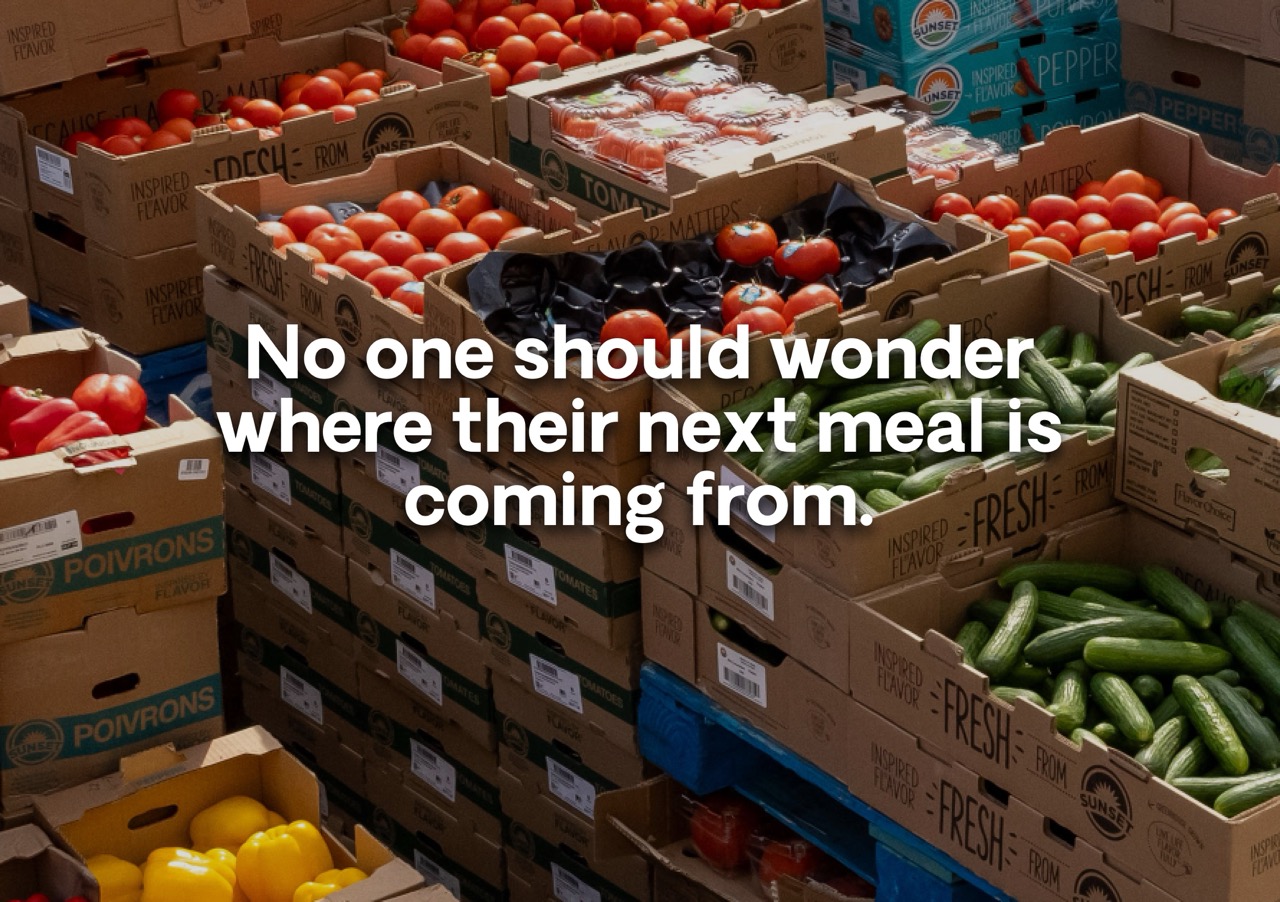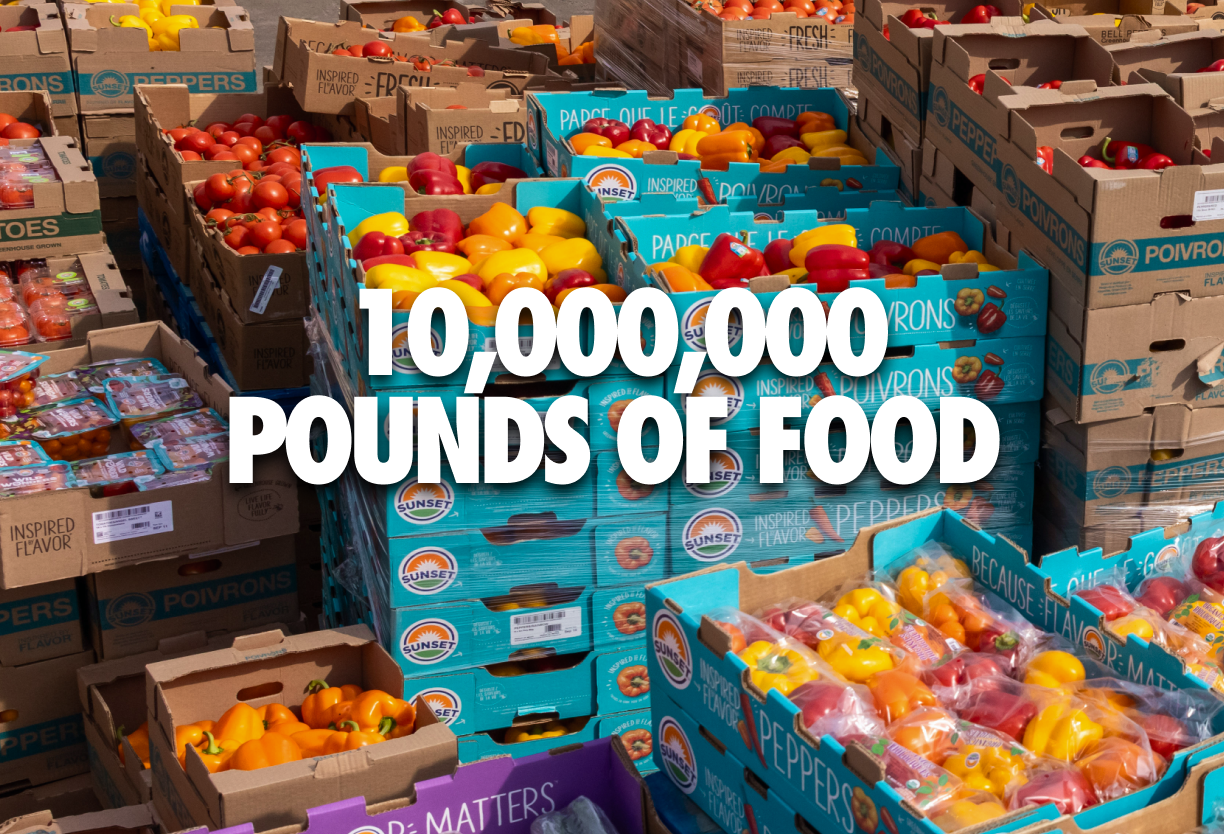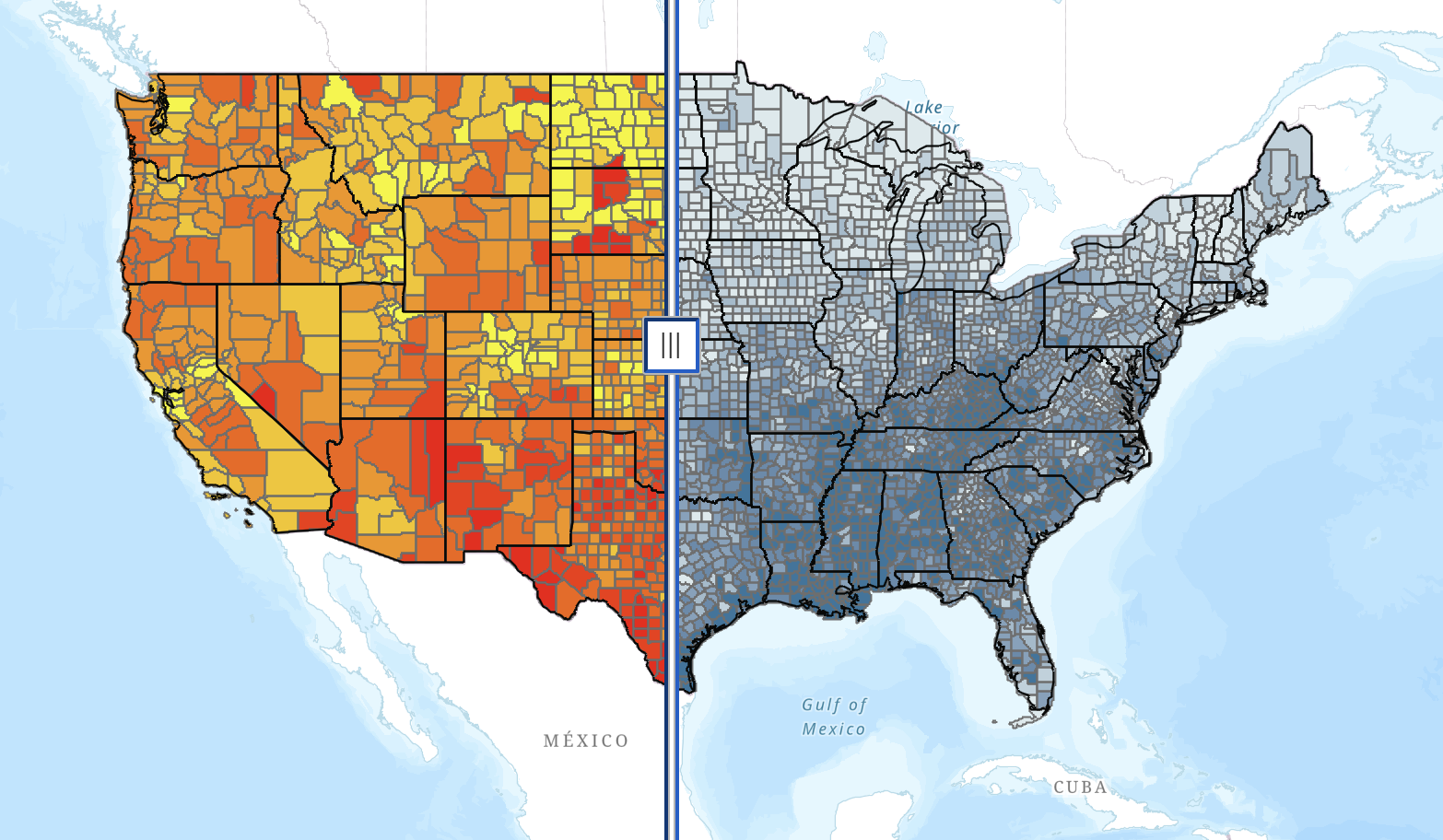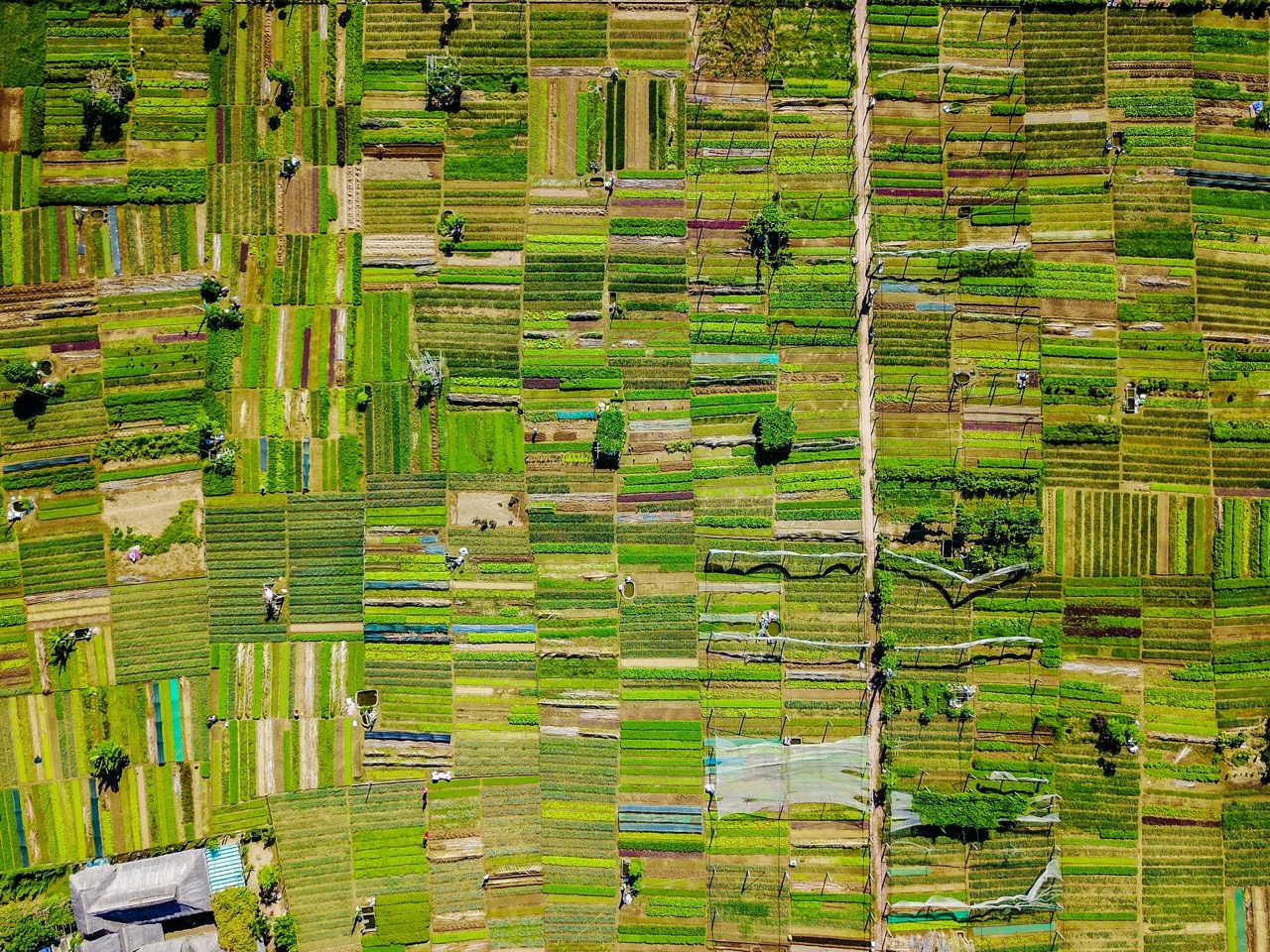On October 7, The Farmlink Project helped transport 80,000 pounds of russet potatoes to the Southeast Missouri Food Bank. This year, the Southeast Missouri Food Bank is celebrating its 35th year of serving the people of southeastern Missouri. They are also associated with Feeding America—the largest charitable hunger relief organization in the United States. The food bank typically serves 63,000 individuals a month, but the onset of COVID-19 increased demand for food since many people lost their jobs and subsequently became newly food insecure. Tara Guzman, Resource Acquisition Specialist at Southeast Missouri Food Bank, remarked how at the beginning of the pandemic the demand at the food bank increased by 75 percent. She also reflected about how due to social distancing regulations, logistics of accessing food at the food bank had to change. Unfortunately, this resulted in endless lines of cars filled with people who desperately needed access to food and an increased demand for volunteers to help with the distribution. Southeast Missouri Food Bank was lucky enough to receive a grant to hire people that lost their jobs as a result of COVID-19, many of whom were restaurant workers, to help unpack and distribute food to the thousands of people waiting in line at the food bank.
Tara remarked about how The Farmlink Project has helped the Southeast Missouri Food Bank find more fresh produce from farms. The demand for fresh produce is high yet it is one of the least donated food items because it is perishable and more expensive. Many people assume that states like Missouri are surrounded by farms and therefore produce is plentiful; however, many of the surrounding farms in southeastern Missouri grow crops used for animal feed and not for human consumption which makes locating food that can be donated more challenging. The Farmlink Project has helped people like Tara locate farms with surplus to help meet the demand at food banks and reduce the amount of food waste, ultimately positively impacting the environment by reducing the carbon emissions that come from food waste.
Tara mentioned The Farmlink Project has helped bridge the gap between the types of food donated and demanded by the people of southeastern Missouri. Additionally, as a result of the heightened demand, the Southeast Missouri Food Bank has needed increased flexibility with volunteers and partnerships with farmers, and The Farmlink Project team has enabled a more streamlined process of farms donating produce to food banks. “Farmlink was able to provide flexibility with volunteers and packaging which made us better serve the community.” The Farmlink Project has helped the Southeast Missouri Food Bank find farms with surplus throughout the midwest region which has increased the amount of food distributed to the hungry people of Southeast Missouri and decreased the amount of food waste.
We are incredibly grateful to support food banks to help alleviate hunger in Missouri and across the United States. We are proud to work with organizations like the Southeast Missouri Food Bank to help increase access to food for as many people as possible, while also working towards the goal of alleviating hunger.
< Back
On October 7, The Farmlink Project helped transport 80,000 pounds of russet potatoes to the Southeast Missouri Food Bank. This year, the Southeast Missouri Food Bank is celebrating its 35th year of serving the people of southeastern Missouri. They are also associated with Feeding America—the largest charitable hunger relief organization in the United States. The food bank typically serves 63,000 individuals a month, but the onset of COVID-19 increased demand for food since many people lost their jobs and subsequently became newly food insecure. Tara Guzman, Resource Acquisition Specialist at Southeast Missouri Food Bank, remarked how at the beginning of the pandemic the demand at the food bank increased by 75 percent. She also reflected about how due to social distancing regulations, logistics of accessing food at the food bank had to change. Unfortunately, this resulted in endless lines of cars filled with people who desperately needed access to food and an increased demand for volunteers to help with the distribution. Southeast Missouri Food Bank was lucky enough to receive a grant to hire people that lost their jobs as a result of COVID-19, many of whom were restaurant workers, to help unpack and distribute food to the thousands of people waiting in line at the food bank.
Tara remarked about how The Farmlink Project has helped the Southeast Missouri Food Bank find more fresh produce from farms. The demand for fresh produce is high yet it is one of the least donated food items because it is perishable and more expensive. Many people assume that states like Missouri are surrounded by farms and therefore produce is plentiful; however, many of the surrounding farms in southeastern Missouri grow crops used for animal feed and not for human consumption which makes locating food that can be donated more challenging. The Farmlink Project has helped people like Tara locate farms with surplus to help meet the demand at food banks and reduce the amount of food waste, ultimately positively impacting the environment by reducing the carbon emissions that come from food waste.
Tara mentioned The Farmlink Project has helped bridge the gap between the types of food donated and demanded by the people of southeastern Missouri. Additionally, as a result of the heightened demand, the Southeast Missouri Food Bank has needed increased flexibility with volunteers and partnerships with farmers, and The Farmlink Project team has enabled a more streamlined process of farms donating produce to food banks. “Farmlink was able to provide flexibility with volunteers and packaging which made us better serve the community.” The Farmlink Project has helped the Southeast Missouri Food Bank find farms with surplus throughout the midwest region which has increased the amount of food distributed to the hungry people of Southeast Missouri and decreased the amount of food waste.
We are incredibly grateful to support food banks to help alleviate hunger in Missouri and across the United States. We are proud to work with organizations like the Southeast Missouri Food Bank to help increase access to food for as many people as possible, while also working towards the goal of alleviating hunger.
Southeast Missouri Food Bank
Sikeston, MO
On October 7, The Farmlink Project helped transport 80,000 pounds of russet potatoes to the Southeast Missouri Food Bank. This year, the Southeast Missouri Food Bank is celebrating its 35th year of serving the people of southeastern Missouri. They are also associated with Feeding America—the largest charitable hunger relief organization in the United States. The food bank typically serves 63,000 individuals a month, but the onset of COVID-19 increased demand for food since many people lost their jobs and subsequently became newly food insecure. Tara Guzman, Resource Acquisition Specialist at Southeast Missouri Food Bank, remarked how at the beginning of the pandemic the demand at the food bank increased by 75 percent. She also reflected about how due to social distancing regulations, logistics of accessing food at the food bank had to change. Unfortunately, this resulted in endless lines of cars filled with people who desperately needed access to food and an increased demand for volunteers to help with the distribution. Southeast Missouri Food Bank was lucky enough to receive a grant to hire people that lost their jobs as a result of COVID-19, many of whom were restaurant workers, to help unpack and distribute food to the thousands of people waiting in line at the food bank.
Tara remarked about how The Farmlink Project has helped the Southeast Missouri Food Bank find more fresh produce from farms. The demand for fresh produce is high yet it is one of the least donated food items because it is perishable and more expensive. Many people assume that states like Missouri are surrounded by farms and therefore produce is plentiful; however, many of the surrounding farms in southeastern Missouri grow crops used for animal feed and not for human consumption which makes locating food that can be donated more challenging. The Farmlink Project has helped people like Tara locate farms with surplus to help meet the demand at food banks and reduce the amount of food waste, ultimately positively impacting the environment by reducing the carbon emissions that come from food waste.
Tara mentioned The Farmlink Project has helped bridge the gap between the types of food donated and demanded by the people of southeastern Missouri. Additionally, as a result of the heightened demand, the Southeast Missouri Food Bank has needed increased flexibility with volunteers and partnerships with farmers, and The Farmlink Project team has enabled a more streamlined process of farms donating produce to food banks. “Farmlink was able to provide flexibility with volunteers and packaging which made us better serve the community.” The Farmlink Project has helped the Southeast Missouri Food Bank find farms with surplus throughout the midwest region which has increased the amount of food distributed to the hungry people of Southeast Missouri and decreased the amount of food waste.
We are incredibly grateful to support food banks to help alleviate hunger in Missouri and across the United States. We are proud to work with organizations like the Southeast Missouri Food Bank to help increase access to food for as many people as possible, while also working towards the goal of alleviating hunger.
.png)







.svg)
.svg)
.svg)